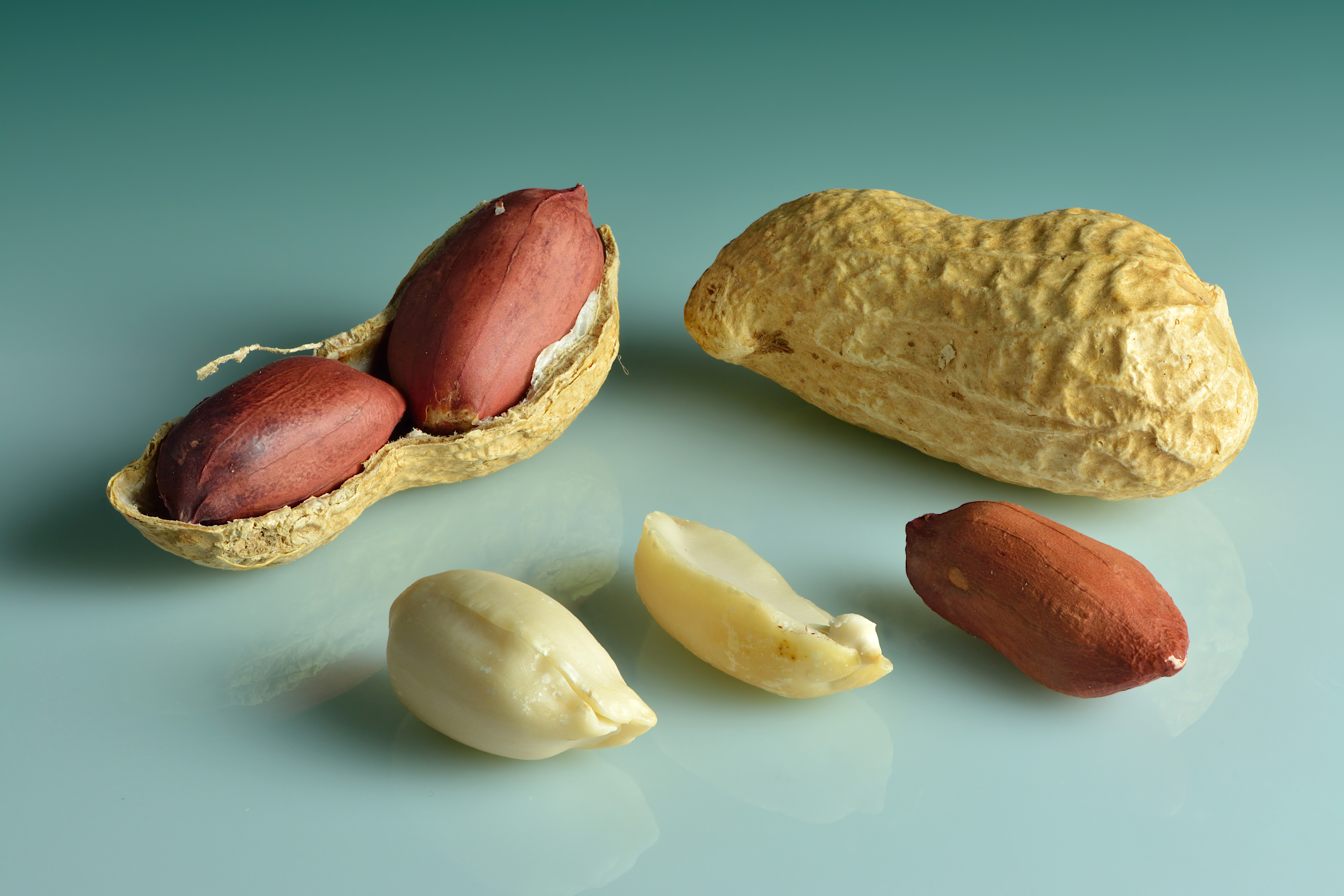The Origin Of Peanuts Is a Nutty Story
Peanuts, scientifically known as Arachis hypogaea, are not true nuts but legumes. Originating from the Andes foothills in South America, evidence suggests their cultivation dates back at least 7,600 years. Each peanut pod, resembling other legumes, contains one to four seeds.
Peanuts found their way around the world thanks to their hardiness and appeal. By the 1st century AD, they had reached Mexico. European explorers further spread peanuts to China and Africa by the 1500s, where they quickly gained popularity.
In North America, peanuts were introduced largely through the transatlantic slave trade. Enslaved Africans brought peanuts to Virginia, where they were cultivated for food, oil, and even as a cocoa substitute. By the 19th century, peanuts had become a commercial crop and a popular snack, partly thanks to P.T. Barnum’s circus.
The 20th century saw innovations in peanut farming, making cultivation and harvesting more efficient. This coincided with a shift from cotton to peanut farming due to boll weevil infestations in cotton crops.
Health Benefits of Peanuts
Peanuts are nutritional powerhouses. A quarter cup of peanuts provides essential vitamins and minerals, including B3, B1, E, biotin, folate, copper, manganese, molybdenum, phosphorus, and nearly 20% of daily protein needs.
Combatting Malnutrition with Peanuts
Pediatricians in Africa have developed a high-energy, ready-to-use therapeutic food from peanuts to combat severe acute malnutrition (SAM). This cost-effective treatment, resistant to spoilage, has saved thousands of children in the past decade.
Recent research challenges earlier beliefs about peanut allergies. The late introduction of peanuts was once thought to prevent allergies, but newer studies suggest early exposure might be more beneficial.
Recent findings indicate that dry-roasting peanuts can cause chemical modifications to proteins, potentially triggering more severe allergic reactions compared to other forms of peanuts.
The Impact of Peanuts on African Agriculture and Economy
The introduction of peanuts to Africa by conquistadors in the 15th century had a profound impact on the continent’s agriculture. The sandy soils of West Africa, particularly suited for peanut cultivation, led to a significant transformation in farming practices.
As the demand for peanuts grew, so did their influence on the agricultural landscape and economy. This legume not only reshaped farming techniques but also played a crucial role in the economic development of several African nations. The surge in peanut farming also had implications for labor dynamics, reflecting a complex interplay of agriculture and socio-economic factors.
The Nutritional and Economic Significance of Peanuts
Peanuts, primarily cultivated for oil production, possess a rich array of functional compounds including proteins, fibers, polyphenols, antioxidants, vitamins, and minerals. These attributes not only make peanuts a nutritional powerhouse but also a versatile ingredient in food processing.
Beyond nutritional benefits, the economic significance of peanuts is notable. The by-products of peanut oil extraction, such as peanut cake, are used in various food products, contributing to the circular economy in the agricultural sector. This multifaceted utility underscores the peanut’s role in both dietary health and economic sustenance.
The various forms of peanut consumption — from roasted snacks and peanut oil to peanut butter and boiled peanuts — reflect the versatility of this legume. Each form offers unique nutritional and sensory experiences, making peanuts an integral part of diverse culinary traditions. The lesser-known fact that peanut butter can be chemically transformed into diamonds highlights the fascinating scientific potential of this common food item.
Statistics About Peanuts That You Didnt Know

- In 2022, the United States produced approximately 5.57 billion pounds of peanuts, a decrease from the 7.12 billion pounds produced in 2017. This indicates a significant change in peanut production volume in one of the leading peanut-producing countries.
- Per capita peanut consumption in the United States reached a record high of 7.9 pounds in 2021, marking the second consecutive year of unprecedented consumption levels. This statistic highlights the growing popularity of peanuts in the American diet.
- The global peanut market is projected to grow from USD 88.13 billion in 2023 to USD 100.20 billion by 2028, with a Compound Annual Growth Rate (CAGR) of 2.60% during this period. This growth reflects the increasing demand and economic importance of peanuts worldwide.
- During the 2022–2023 marketing year, the total use of peanuts in food products is forecasted to reach 1.69 million tons, an increase of 2.1% from the previous year. Notably, the use of peanuts in peanut butter is rising, contrasting with a decrease in their use in candy and snacks.
- China, India, and Nigeria are the top three peanut producers globally, with China leading at 17,572,798 tonnes per year. Together, these three countries contribute to over 50% of the world’s total peanut production. This statistic underscores the significant role these countries play in the global peanut industry.
Sustainability and Ecological Footprint
Peanut cultivation, like any agricultural activity, has an environmental impact that warrants discussion. The debate centers around water usage, soil health, and the use of pesticides and fertilizers in peanut farming. Some argue that peanuts, being legumes, enrich the soil by fixing nitrogen, reducing the need for chemical fertilizers. However, concerns about water consumption and pesticide runoff challenge the narrative of peanuts as an eco-friendly crop.
The GMO Debate in Peanut Production
The development of genetically modified (GM) peanuts has sparked debate over their safety, benefits, and ethical implications. Proponents argue that GM peanuts can enhance yield, provide resistance to diseases, and potentially reduce allergic reactions. However, critics raise concerns about the long-term ecological and health impacts of genetically modifying a staple food.
Agricultural Economics and Farmer Welfare
The global peanut market significantly impacts the economies of producing countries, often creating disparities between large-scale industrial producers and small-scale farmers. Issues like market volatility, price fluctuations, and fair trade practices directly affect the livelihoods of farmers.
Peanut Allergies and Public Health Policies
Peanut allergies are among the most common and severe food allergies, leading to significant public health concerns. The debate here revolves around how schools, public institutions, and food manufacturers should address the risks associated with peanut exposure. This includes discussions on labeling laws, peanut-free zones, and the balance between accommodating allergies and personal freedoms.
Peanuts in Social and Cultural Contexts
Beyond their nutritional and economic value, peanuts hold cultural significance in various societies. In some cultures, peanuts are integral to traditional cuisines and rituals, while in others, they symbolize prosperity or are used in folk medicine.
A Peanut FAQ
Q: How do I select the best type of peanut for cooking or snacking?
A: When you’re picking peanuts for your kitchen, consider the variety and its best use. For snacking, Virginia and Valencia types are ideal due to their larger size and sweeter taste. If you’re making peanut butter, Runner peanuts are your go-to, as they have a uniform size and a classic peanut flavor. Always check for freshness; the nuts should not have any signs of mold or a rancid smell.
Q: What’s the best way to store peanuts to keep them fresh?
A: To extend the shelf life of your peanuts, store them in an airtight container in a cool, dry place. If you’ve got shelled peanuts, consider refrigerating or freezing them; this keeps the oils from going rancid. Unshelled peanuts can last longer at room temperature, but always ensure they are away from moisture and heat.
Q: How do I prepare raw peanuts for cooking?
A: If you’ve bought raw peanuts, you’ll need to clean and possibly shell them, depending on your recipe. Rinse them under cool water to remove any residual dirt. If you need to shell them, gently squeeze the shell until it cracks, and remove the peanuts. For certain recipes, you might also need to remove the thin skin covering the nuts.
Q: What are some healthy ways to include peanuts in my diet?
A: Peanuts are a versatile ingredient and can be a healthy addition to your diet. You can add chopped peanuts to salads for a crunchy texture, or use them as a topping on stir-fries for added protein. Peanut butter is great in smoothies or as a spread on whole-grain toast. Remember, although nutritious, peanuts are also high in calories, so moderation is key.
Q: How can I ensure my kitchen is safe for someone with a peanut allergy?
A: If you’re cooking for someone with a peanut allergy, it’s crucial to prevent cross-contamination. Use separate utensils and cutting boards for preparing peanut-containing foods. Always read labels to check for peanut ingredients or traces, even in products that don’t contain peanuts. When in doubt, opt for peanut-free options and communicate with the person with the allergy to ensure safety.



